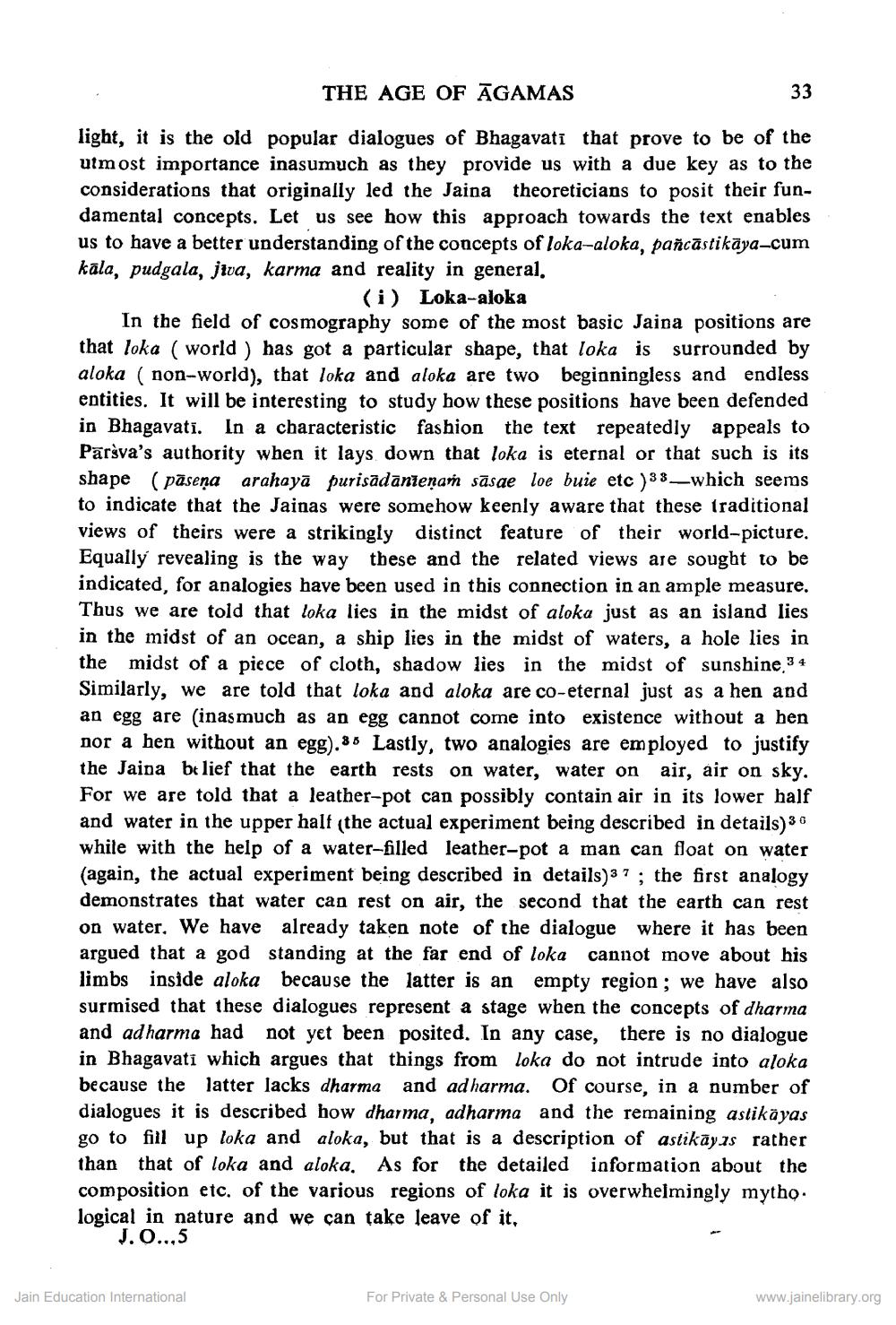________________
THE AGE OF ĀGAMAS
33
light, it is the old popular dialogues of Bhagavati that prove to be of the utmost importance inasumuch as they provide us with a due key as to the considerations that originally led the Jaina theoreticians to posit their fundamental concepts. Let us see how this approach towards the text enables us to have a better understanding of the concepts of loka-aloka, pañcāstikāya-cum kala, pudgala, jiva, karma and reality in general.
(i) Loka-aloka In the field of cosmography some of the most basic Jaina positions are that loka (world) has got a particular shape, that loka is surrounded by aloka (non-world), that loka and aloka are two beginningless and endless entities. It will be interesting to study how these positions have been defended in Bhagavati. In a characteristic fashion the text repeatedly appeals to Pārsva's authority when it lays down that loka is eternal or that such is its shape (pāsena arahayā purisādanienań sāsae loe buie etc )33—which seems to indicate that the Jainas were somehow keenly aware that these traditional views of theirs were a strikingly distinct feature of their world-picture. Equally revealing is the way these and the related views are sought to be indicated, for analogies have been used in this connection in an ample measure. Thus we are told that loka lies in the midst of aloka just as an island lies in the midst of an ocean, a ship lies in the midst of waters, a hole lies in the midst of a piece of cloth, shadow lies in the midst of sunshine. 3 4 Similarly, we are told that loka and aloka are co-eternal just as a hen and an egg are (inasmuch as an egg cannot come into existence without a hen nor a hen without an egg).88 Lastly, two analogies are employed to justify the Jaina bt lief that the earth rests on water, water on air, air on sky. For we are told that a leather-pot can possibly contain air in its lower half and water in the upper half (the actual experiment being described in details) 36 while with the help of a water-filled leather-pot a man can float on water (again, the actual experiment being described in details) 3 7; the first analogy demonstrates that water can rest on air, the second that the earth can rest on water. We have already taken note of the dialogue where it has been argued that a god standing at the far end of loka cannot move about his limbs inside aloka because the latter is an empty region ; we have also surmised that these dialogues represent a stage when the concepts of dharma and adharma had not yet been posited. In any case, there is no dialogue in Bhagavati which argues that things from loka do not intrude into aloka because the latter lacks dharma and ad harma. Of course, in a number of dialogues it is described how dharma, adharma and the remaining astikāyas go to fill up loka and aloka, but that is a description of astikāy.as rather than that of loka and aloka. As for the detailed information about the composition etc. of the various regions of loka it is overwhelmingly mytho. logical in nature and we can take leave of it,
J.O..,5
Jain Education International
For Private & Personal Use Only
www.jainelibrary.org




